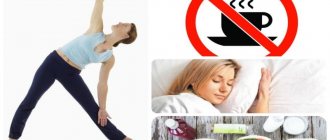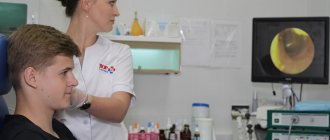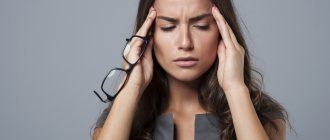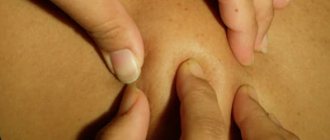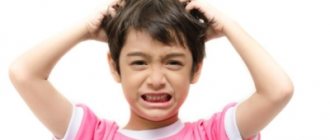Hello dear readers. Many of us have various kinds of fears, but there are those that at first glance seem unthinkable and far-fetched to us, but this is not so. A phobia is a mental disorder accompanied by unreasonable fear. It is common for a person to be afraid of something if a situation or circumstance threatens life or puts us in danger. However, a phobia is a fear that has no rational basis.
Scientists count more than 40 thousand phobias, and their number is only growing every year. Some are afraid of ghosts, some are afraid of heights, others are terrified at the sight of insects. But there are also the most unusual fears, for example, trypophobia.
What is trypophobia, how does it manifest itself, what symptoms indicate the presence of a mental disorder, and how to deal with this illness, you will learn in this article.
All photos that can cause an attack of trypophobia, so as not to harm you, I hid under spoilers! Open and look at these photos only if you are sure that they will not harm you!
What is trypophobia and who are trypophobes?
The term "trypophobia" comes from gr. τρύπα - hole and φόβος - fear. That is, in simple words, it is a fear of holes. Although this phobia is not classified as a type of mental disorder, about 16% of people on the planet suffer from the disease.
Trypophobes experience overwhelming horror and disgust at the sight of a cluster of small holes on something. To understand how developed this fear is in a person, you need to have a trypophobic experience. For example, true trypophobes, when they see cluster holes (a collection of holes and bumps on any surface), experience anxiety, disgust and irrepressible fear. Some develop a panic attack, and even a catatonic stupor.
Today, scientists are actively studying the topic of trypophobia, conducting numerous studies and tests that help people with a fear of holes overcome unpleasant sensations.
What is the most common cause of hole phobia?
Trypophobia in humans is caused by intolerance to any kind of holes and openings. Unfortunately, this disorder is much more serious than one might think. Trypophobes are afraid of anything that may contain many holes: coffee foam, pasta, honeycombs. A striking example of disgust for trypophobes is the seemingly harmless lotus fruit. The presence of round holes causes disgust and anxiety in people.
Even biological materials can cause fear and nausea in trypophobia sufferers. These include human skin (pores, for example), trees, insects and even stones, rocks with pronounced cluster holes.
The most severe case is the fear of holes in food. People suffering from trypophobia react especially negatively to waffle cakes, pancakes, cheese, cucumbers, strawberries, and even citrus fruits. Any hint of a cluster of holes will immediately turn you away from using the product.
Photo of a honeycomb.
Historical roots of trypophobia
In fact, every person, to one degree or another, experiences a dislike for a large accumulation of holes and holes. But healthy people who are not susceptible to trypophobia can easily switch their attention to other details. A trypophobe will not be able to stay in the place where his phobia was identified. He will want to leave the room or place as soon as possible.
Previously, scientists assumed that the fear of holes was inherent in humans by their ancestors. They explained the gene for fear of the accumulation of holes simply: the bodies of dangerous animals, for example, the octopus, posed a direct threat to our ancestors. Spiders and sea creatures had round holes on their bodies. Therefore, even an ordinary person may experience discomfort at the sight of some animals.
Scientists from the University of Essex have established a direct connection between pathogenetic fear. People have an instinctive tendency to reject certain visual images that could previously cause harm to health. We associate objects that cause fear in trypophobia with spots on the surface of the dermis, which are present in most poisonous animals and insects.
Therefore, we inherited from our ancestors a kind of instinctive mechanism: to feel disgust at the sight of such objects. However, such a genetic property can be aggravated by traumatic circumstances and cause a pathological fear of any kind of holes.
There is also another hypothesis for the appearance of trypophobia. It is connected with the work of our brain. According to this theory, we associate cluster holes with infectious diseases or the consequences of skin trauma.
For example, a wasp sting automatically causes an allergic reaction to the insect's venom in a person. The skin becomes blotchy and we can clearly see enlarged pores. Knowing that this is accompanied by pain and discomfort, we subconsciously avoid everything that could cause us harm. The same applies to the consequences of a disease such as measles. The skin becomes covered with pimples, and the holes are clearly visible. This, perhaps unconsciously, leads us to the conclusion that many holes are a possible health hazard.
Trypophobia in the modern world
To date, the medical association does not classify trypophobia as a type of disease. Cluster hole phobia is not a medical condition. However, this does not mean that phobias are not studied by researchers, scientists and psychologists.
Unfortunately, the phobia presented is also not given due attention. And all because there are not so many people with pronounced symptoms. Despite such circumstances, England is actively studying the issue of trypophobia and conducting tests at universities to study the human psyche.
Photo of cells.
Consequences of a neglected phobia
As the phobia develops, complications arise: depression, withdrawal, hallucinations. Fear of cluster holes in the body or other objects interferes with socialization and personality development. Most people do not understand such fear; they laugh at trypophobes or express outright hostility towards them.
We are surrounded by many objects with clustered holes; fortunately, in most cases, trypophobia is frightened by a specific object or group, and not by all living and inanimate objects with holes. For example, a patient is afraid only of cheese or only of honeycombs. But even in this situation, the patient’s life can hardly be called pleasant and fulfilling. Avoiding the feared object does not solve the problem. Without treatment, the symptoms of a phobia, as well as the person’s general well-being, will worsen.
Symptoms of trypophobia
As I wrote above, many people feel a slight dislike when they see holes. Even the accumulation of larvae, worms, or anthills can cause us anxiety and anxiety. We will want to leave the place where the hidden threat or unpleasant picture is located. But with trypophobes everything is much more complicated.
The first symptoms of trypophobia
Recognizing them is not so difficult. The main thing is to realize that such a problem really exists. The disorder can be identified by observing two elements, namely:
- Visual perception of clusters. Directly when you see an unpleasant image near you;
- Bodily sensations, i.e. the feelings you experience when visually examining an object.
The brain of trypophobes, when they see holes, immediately gives a signal to their internal systems about the onset of danger. Symptoms of this condition are accompanied by:
- Rapid breathing. Shallow and rapid breathing indicates that a person is wary of clusters;
- Tachycardia. A person may experience rapid increases in blood pressure and rapid heartbeat;
- Lack of oxygen. The trypophobe begins to breathe deeply in order to “breathe”;
- Often, such people begin to rapidly sweat and dry out their mouths. This is another important sign of trypophobia.;
- Nausea. A more serious symptom is the onset of nausea, which in some cases may be accompanied by vomiting. By the way, this reflex was conceived by nature for a reason. A person frees himself from everything unnecessary so that it is easier to escape from danger.
One has only to see something cellular and a person will immediately feel uneasy.
The most obvious symptoms of fear of holes
- Itching on the body. First, the patient begins to scratch his neck (the most vulnerable place), then his arms, and his torso. The itching does not stop for a long time, which in turn causes nervousness and irritability;
- Dizziness. Due to lack of oxygen, a trypophobe may experience clouding in the head. Black spots often appear in the eyes, which also cause hostility and fear in the patient. This may lead to fainting;
- Panic attack. In this case, the trypophobe may behave inappropriately, try to hide from the holes, hide in a corner and cry. A panic attack can manifest differently for each person. Some take a passive position and experience horror alone, while others show aggression and rage.
Most often, the consequences of trypophobia are accompanied by a rash on the skin and hands. After encountering cluster holes, the patient may notice red spots on the body on a bodily level. But over time, they go away without the use of any medications or ointments.
All symptoms can be combined, or just one may appear.
How did trypophobia appear in our time?
As mentioned above, trypophobia, or fear of holes, was recorded not so long ago.
Scientists give this a completely logical explanation.
With the development of technology (the Internet, digital cameras, smartphones, photo processing programs), many began to take and distribute fake photos that have nothing to do with reality.
Unpleasant, and sometimes actually terrifying, pictures of holes in people’s skin began to appear on the Internet. And if some immediately understood that the photos were not real, then others, more suspicious and less knowledgeable in photo technology, accepted and continue to accept this as the truth.
There is even a false belief among the population that trypophobia is a disease in the form of holes that corrode the body. Moreover, some began to “add fuel to the fire” and convince the unfortunate that this is a special virus, rapidly progressing and leading to serious consequences. Usually, after such phrases, people were offered a product (cream, ointment, spray) that could protect against trypophobia.
Important!
Under no circumstances should you ignore children's fears, even if they seem absurd to you. If you do not help your child get rid of fear, it may well develop into a phobia and significantly spoil the quality of life.
But trypophobia is exclusively a psychological disorder, not a disease. But what it can really lead to is a rash and itching due to nerves (neurodermatitis).
However, despite blatant photoshop on the Internet, the phobia is progressing. Some people, who were once very frightened by such pictures, are driven into trypophobic horror not by fake images of people’s skin with holes, but by cluster holes in nature, products and the world around them in general.
Types of fear of hole congestion
Today, there are two types of trypophobes. This aspect should be discussed in more detail to make it easier to diagnose the type of disease in the future.
Cutaneous trypophobia
This type of patient cannot tolerate bodily harm. Trypophobia on the body is probably one of the most unpleasant types of fear, as a person experiences panic, horror, nausea and disgust at the sight of:
- Acne or various types of pimples on the body;
- Sebaceous glands and wide open pores;
- Scars left after acne;
- Necrosis of the dermis.
It is not possible for a trypophobe to withstand all these physical circumstances. Considering that skin problems, to one degree or another, occur in all people, trypophobes have a hard time. Moreover, some patients even narrow their social circle and prefer homework to group work. With such asociality, the help of a specialist is necessary. I will describe below who you should contact.
Photo of a hand.
Cluster trypophobia
This type includes all other types of holes. These include:
- Food products (bread, buns, coffee, pasta, etc.);
- Sponge algae;
- Some types of flowers and seeds, as well as trees;
- Tunnels that were created naturally by insects or animals.
One way or another, with cluster trypophobia, a person can avoid meeting potential danger. That is, the patient may not buy scary products, not look at them in the store (although sometimes this can be difficult), and avoid wild nature.
Photo of a porous chocolate bar.
Trypophobia on human skin
Due to insufficient knowledge of the fear of a large number of small holes, many myths and rumors arise around it. For example, someone started a rumor that trypophobia on the body is a disease that affects a person’s skin, causes holes in the skin, abscesses, tears, and supposedly the disease destroys parts of the body. And these rumors are supported by photographs created using Photoshop. They depict and retouch individual parts of the body (holes in the human body or skin are superimposed on healthy parts) or depict body parts with wax makeup (most often on the palm).
It is important! Trypophobia is not a somatic disease; it does not affect the human body. Any physical discomfort is caused by self-hypnosis.
Causes of phobia of holes and holes
The main researchers of the strange mental reaction to multiple holes, Arnold Wilkins and Jeff Cole, noted that the term “phobia” does not accurately explain the patient’s condition. The opinion of psychologists has come down to the fact that they do not see fear in this disease, but rather disgust and disgust.
If you type “What is trypophobia” or “Trypophobia test” on the Internet, you will be asked to watch a thematic video series on cluster holes. Any footage that graphically depicts hands in honeycombs or wide holes on the hands, face, and body in general will cause disgust and hostility even in a mentally healthy person.
Postmodern artists painted hands and bodies riddled with holes and worms, which looks more like a sick fantasy of the author than an aesthetic artistic masterpiece. And here the question arises by itself: what comes first – multiple holes that cause fear or such images created by someone’s fevered imagination?
It is worth noting that researchers at the University of Essex also identified signs of trypophobia. Thus, from the proposed pictures, where both cluster holes and other images were presented, they noted that the first made them feel disgusted, but the second did not.
British scientists interpret trypophobia as an “evolutionary gene” that we inherited to help us survive the sight of poisonous animals and insects.
Photo of a honeycomb.
The most terrible disease in the world is called trypophobia: don’t even doubt it
Visit a contemporary art exhibition.
Take a close look at the installations and paintings. Check your reactions. If the exhibits offered to your attention cause indignation and disgust, if goosebumps run through your body and vomiting begins, congratulations: the immune defense of your psyche is working normally. Using the same principle, you can test yourself by looking at pictures of worm-eaten skin from the ubiquitous “British scientists.” Don't let yourself be manipulated: disgust is a natural reaction to such images. This is a sign of mental health, not a disease with an obscure Greek name.
Well, if you are still afraid of holes in boiled pasta, the treatment is very simple: immediately replace it with fried potatoes.
Chupalova Maya · Apr 11, 2018
Stages of trypophobia
Of course, this is a mental problem. Accordingly, help needs to be provided to overcome this unmotivated fear. Today there are three types of trypophobia:
- Light form. When a person sees an object of fear, he begins to get nervous and experience anxiety, for example, looking at chocolate or coffee foam;
- Medium shape. In this case, the patient experiences persistent disgust, nausea, and sometimes itching may begin;
- Severe form. A person experiences unbridled fear, leading to a panic attack. Semi-fainting and fainting conditions may also occur.
In any case, with mild or severe trypophobia, you need to take measures to alleviate your condition.
Don't be afraid to see a doctor!
Why is it dangerous?
Phobia is dangerous due to the possible aggravation of the condition, leading to mental disorder
Fortunately, this phobia is extremely rarely complicated by the development of a serious pathological condition. But in advanced situations, the following manifestations are still possible:
- extremely painful sudden muscle contraction;
- prolonged migraines;
- short-term loss of consciousness;
- increased muscle tone;
- changes in the body leading to loss of motor function.
How to Diagnose Cluster Hole Fear
Considering that today it is impossible to diagnose “trypophobia” due to its not being included in the medical classification of diseases, the disease is classified as obsessive-compulsive disorder. Accordingly, diagnosis and treatment are the same as recovery methods for other types of phobias.
Today, the diagnosis of the condition is carried out by a psychotherapist or psychologist. The only difference is that the first has the right to prescribe drug therapy in the form of sedatives and stronger drugs, while the second does not have such powers.
It depends only on your symptoms which specialist is preferable to go to. However, it should be noted that even with a severe stage of the phobia, taking pills does not guarantee complete relief from the disease. In this case, it is better to find a good specialist who can correctly diagnose your condition and prescribe competent therapy.
Photo of a cellular plant.
Symptoms of the disease
Trypophobia, the symptoms of which are not fully understood, is one of the youngest phobias, and many authoritative experts still refuse to include it in the list of diseases. An individual susceptible to the disease in question most often experiences the following conditions:
- outbursts of fear or panic attacks;
- prolonged feeling of anxiety;
- cardiopalmus;
- severe dizziness;
- increased sweating;
- nervousness.
Trypophobia in people can be accompanied by more serious health consequences. If in the early stages of the disease the patient experiences severe anxiety with all the attendant physiological symptoms, then as the disease progresses, itching, redness of the skin, muscle spasms or convulsions are added. In its extreme form, the disease leads to loss of consciousness, difficulty breathing, loss of coordination and psychological abnormalities (depression, withdrawal, reluctance to go outside). The signs of trypophobia can vary significantly, so only an experienced specialist can make an accurate diagnosis.
Should fear of holes be treated?
A person must answer this question for himself. It is advisable to treat a phobia if it interferes with life, causes discomfort and life seems hopeless. I have already written above about the stages of trypophobia. But as practice shows, even with a mild form of phobia, not only the mood, but also life in general deteriorates.
If you feel that you cannot ignore the smallest details that you associate with clusters, it is better to consult a psychologist. This is a sure sign that you yourself cannot cope with obsessive fear.
Diagnostics
Diagnosis of a phobia is carried out by demonstrating various images of cluster holes
If you suspect you have trypophobia, consult a doctor, in particular a psychotherapist.
- In order to confirm the expected diagnosis, the specialist will first of all collect an anamnesis, find out what exactly is bothering you, how long ago the first symptoms appeared, and what causes them.
- The doctor will conduct a test to determine trypophobia by showing pictures of holes.
- A positive result will occur when an anxious state occurs after viewing more than one image.
- If the test result is positive, the doctor, after observing the patient’s reactions, will draw a conclusion about what degree of phobia exists. Further treatment will depend on this.
Treatment of trypophobia
Any psychological and mental illness does not have a single therapeutic program. Each patient is individual, and the approach to solving the problem is selected taking into account the person’s medical history. There are currently three types of treatment for trypophobia. Let's look at them in more detail.
Pharmacological.
Accompanied by taking sedatives, antihistamines or stronger drugs. Drug therapy is justified only if the patient experiences bodily sensations (itching, dizziness, loss of consciousness). This therapy is aimed at quickly relieving the symptoms of trypophobia, but is not curative.
To reduce the severity of cephalgia of psychogenic etymology and attacks of headaches, short-term courses of anxiolytic drugs, such as benzodiazepine tranquilizers, are used.
For mild symptoms of trypophobia, it is important to prescribe sedatives to improve the patient’s sleep. If the phobia is accompanied by seizures or convulsions, the doctor has the right to prescribe anticonvulsants.
The pills are aimed at relieving symptoms, not treating.
Psychotherapeutic
The work of a psychologist is to normalize the patient’s mental state by conducting a psychotherapeutic course. In this case, there is no clear method of the session, since the psychologist creates the course, taking into account the patient’s condition.
One proven practice is to reduce the symptoms of a panic attack. The patient is offered a series of pictures that evoke peace and aesthetic feelings. Along with inspiring images, the psychologist also shows the object of the patient's fear, and then again calming fragments. Gradually, the specialist increases the duration of display of cluster images, replacing them with pleasant pictures. The presented technique includes proper breathing.
When seeing both images, another trigger begins to go off in the patient’s head: “it’s not as scary as it seems.” The results of such sessions are truly fascinating. Most trypophobes experience a decrease in the intensity of their anxiety reactions, and also gain control over their own behavior.
Perhaps the best way to overcome trypophobia.
Hypnosis treatment
Sometimes a destructive thinking program is so deeply embedded in the psyche that it is not possible to identify it in a waking state. Hypnosis techniques are used to treat panic attacks and aggressive conditions. What is its essence?
Sometimes a person himself cannot truly understand the reason for his fear. Unreasonable worries can be identified in the subconscious, which is impossible to reach in wakefulness. The specialist reduces the control of a person’s consciousness, plunging him into a hypnotic trance, after which he corrects the “plan” of the subconscious.
During a natural half-asleep state, a hypnologist can reveal the true mechanisms of progression of trypophobia. In this state, the hypnologist instills a motivating attitude to eliminate defective thinking structures and introduces a new, constructive model of behavior.
Hypnosis can sometimes help.
Therapy methods
The phobia in question should be treated without fail. Lack of attention to the psycho-emotional balance of a person suffering from a psychological disorder can lead to disastrous consequences. Despite the fact that most psychiatrists view this pathology with a degree of skepticism, the clinical manifestations of the disease bring significant difficulties to patients in life.
Annual research allows us to constantly improve treatment methods. Treatment of trypophobia includes the use of certain medications and the use of psychotherapeutic techniques. In most cases, patients with this diagnosis are prescribed sedative medications. Let's look at how to treat trypophobia using a conservative medication method:
- Sedative medications. Depending on the form of manifestation of a panic attack, both mild “herbal” medicines and potent tranquilizers and barbiturates are used.
- Anti-inflammatory drugs. Used to reduce skin irritation. This category of drugs is used to reduce the intensity of inflammatory processes and swelling.
- Antihistamines. Antiallergic tablets help eliminate the feeling of itching, burning and redness. Some names in this category of drugs have a mild sedative effect.
Trypophobia is not just fear or disgust, but a mental pathology. The use of the medications described above can reduce the severity of symptoms characteristic of panic attacks. Thus, in the absence of an irritant, the patient has the opportunity to live a full life. But, in order to completely get rid of trypophobia, the use of potent medications is not enough.
You can get rid of a phobia only by working with a psychotherapist
You should also pay attention to the fact that in order to eliminate the disease, you will need to identify the cause of its occurrence. Some psychotherapists are forced to work with their patients for many years in order to find the true cause of the development of the phobia.
The work of a psychiatrist is to eliminate the painful fixation of consciousness on pathological associations
Returning to the fear of holes, it is important to emphasize that with such a diagnosis, the patient’s consciousness is fixed not on the very fact of the presence of holes in the objects surrounding him, but on the fact that this cavity causes unpleasant associations. In order to rid the patient of such associations, the doctor must work in several directions at once, including influencing the subconscious and cognitive perception
When working at the cognitive level, the professional's job is to enable the patient to learn to perceive the differences between danger and safety. The primary task of the doctor is to teach the patient to correctly determine the degree of danger. For this purpose, cognitive-behavioral treatment is used. The use of this method eliminates cognitive distortions, which allows the patient to understand the nature of his own fear. Thus, the degree of horror in front of the object of phobia is significantly reduced.
To deeply influence the subconscious, the fear visualization method is used in combination with hypnotherapy. Quite often, at such sessions, the patient is shown a pre-prepared video sequence. This video uses pictures that evoke pleasant emotions. At a certain minute, irritating elements are inserted into the calming fragments of the video. At each session, the number of stimuli gradually increases. Toward the end of therapy, the patient begins to become more equanimous about being shown videos consisting entirely of irritating objects.
Like most similar disorders, trypophobia often manifests itself spontaneously and is inherited.
If the need arises, the specialist should direct therapy to strengthen the protective functions of the psyche by developing stress resistance
Particular attention is paid to working with relationships and family conflicts. One of the primary tasks of a psychotherapist is to teach the patient methods of self-help during a panic attack and reducing anxiety.
Properly selected methods of psychotherapy and drug treatment can achieve positive results within several months.
World research on trypophobia
To this day, scientists and psychologists debate how serious trypophobia is. Some believe that this is an obsession, others that it is a mental disorder. But in order not to scare all people, signs of trypophobia in a person are a normal phenomenon.
If you, for example, look at skin eaten away by worms, this will automatically cause rejection and hostility in you. So there is no need to be ashamed of this circumstance. What looks unpresentable, ugly or disgusting causes an understandable reaction in our brain.
Trypophobes, on the other hand, experience an irrational fear of any kind of holes. This is the main feature of the disease. Worldwide research on trypophobia is currently being actively conducted by scientists and psychologists. Despite the fact that there is a category that suffers from this phobia, it is impossible to find a single treatment method.
The human psyche is individual. Some course will be useful for one patient, but not for another. Therefore, a competent psychologist works with the patient individually.
Photo of coral.
Fears of modern society
The Russian language does not have adequate concepts to express the irrational fear of Western man.
In the 15th century, all the art of Western Europe became infected with images of death and the glorification of evil spirits of all kinds. After the plague epidemics experienced a century earlier, which claimed entire provinces overnight, the collective fear of death reached its apogee. The famous “Dance of Death,” which was generated by the consciousness of artists and musicians of that time, was expressed not in the dance of the dead or death itself, but in the dance of a dead double, inextricably linked with a living person.
The development of printing made it possible to spread the unmotivated fear generated by the consciousness of artists to the entire population of Europe. The fear of the devil, or the so-called “Fear of Luther,” provoked the notorious medieval witch hunt. The Age of Enlightenment gave rise to a new wave of fears among medieval people in Western society. Freed from religious foundations and customs, the prescriptions of community life, from ideas about the world as a beautiful Cosmos, in which everything is controlled by the Creator and Provider, man was left alone with his inner chaos.
Fear of God has turned into fear of Nature, which is initially hostile to man. Perhaps this is where the phobias of terrorism, nuclear war and “zombie apocalypse”, which are skillfully used by social engineers and politicians, come from, so widespread today in Western Europe and the United States.
In the 20th century, when Western man was able to proudly declare that he had put Nature at his service and no longer felt irrational fear of it, a phenomenon that seemed paradoxical at first glance happened: horror moved into the inner world of man. Phobias of loneliness, social networks, political conspiracies, closed and open spaces, etc. bloomed in full bloom.
Nothing like this is found either in Muslim culture, or in the culture of China, or in the culture of a society brought up on Orthodox principles. All of these phobias are inherent exclusively in the consciousness of Western man.
Trypophilia is the opposite of trypophobia
Indeed, today there is an unofficial name for another deviation opposite to trypophobia - trypophilia. In this case, a person, on the contrary, experiences a craving for all sorts of clusters of holes, both on the body and on other surfaces. This is also a kind of psychological addiction. A person, looking at lotus fruits or honeycombs, not only does not feel disgust, but, on the contrary, contemplates them and, if possible, even picks at the holes. The phobia of holes gives way to dependence on holes.
Both trypophobia and trypophilia are not normal conditions for humans. The severe stage of tripophilia involves self-harm. Some people deliberately pick holes on their bodies and enjoy the look of them. So, both phobia and addiction have a destructive effect on a person’s outlook and life as a whole.
Photo of a manicure with cells.
Molluscum contagiosum
Molluscum contagiosum
is caused by a virus through direct contact or through the use of shared hygiene items (washcloths, sponges, towels).
Children get sick more often! Epidemic outbreaks of the disease are possible in children's groups.
The incubation period ranges from 2 weeks to 2-3 months.
These are usually smooth, shiny, translucent pink or grayish-yellow nodules ranging in size from a millet grain to a pea with a characteristic depression in the center. Their number can vary - from single ones, most often located on the face, neck, back of the hands, to numerous, distributed throughout the body.
Sometimes the rashes can coalesce into large, uneven tumor-like formations “giant clam”.
Books about trypophobia
Today there is a lot of psychological literature that helps people get out of difficult situations or look at their lives from a different “angle.” To date, no books have been published about trypophobia, although the work of experts in the field of psychology has improved significantly.
Still, trypophobia is a rather rare disease, but, nevertheless, it deserves no less interest, since ordinary people suffer from unmotivated fear. If you clearly understand that you have such a phobia, then the best way to get acquainted with the possible causes is to visit the office of a psychologist or psychotherapist.
And know that any mental circumstance necessarily has a basis. Despite the fact that the psyche does not hurt, like, for example, the stomach or head, it needs healing. Consider that this is another organ of ours that needs to be monitored and cared for.
What specific images and objects evoke fear?
Not every photo of holes or seeing them in reality leads to horror in trypophobics. For a picture to be scary, it must meet several criteria:
- the holes should be located asymmetrically;
- be small;
- There must be a contrast between the inner surface of the passage and its outer frame.
In the photo below, you can see how the processing of the picture deprives it of its trypophobic nature. What's on the right is a trypophobic drawing, what's on the left shouldn't be scary anymore.
